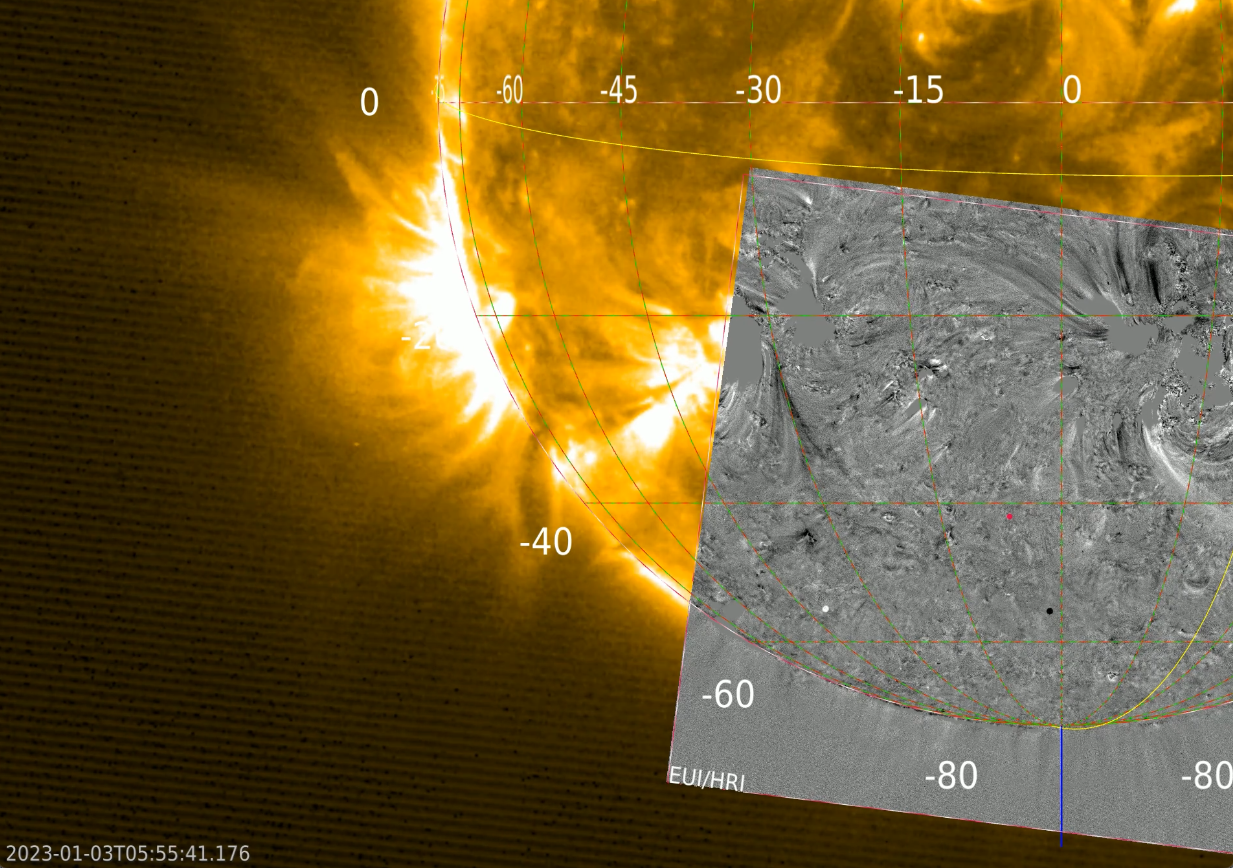The telescope EUI onboard the satellite Solar Orbiter could capture Mercury while it transited the Sun on January 3. Mercury, the planet closest to the Sun, is the little black dot that moves from left to right. Amazing to see how small the planet is compared to the size of the Sun, you hardly see it. To help guide our eye, we use the gray images that are obtained by subtracting two images. The differences between both images appear as black and white, the rest is grey.

Click here to see the JHelioviewer movie 1, movie 2 that we made on the fly. JHelioviewer is our public software to surf through the solar corona.
Is what you see in the picture real?
Scientists can also use the transit to learn how the solar light behaves when it falls into the pixels of the telescope detector. They know that Mercury should appear completely black in the solar image. If it is not, it means that light falling into a pixel influences the neighboring pixels as well. If you understand how that happens, you can remove this unwanted signal. The result is an image that is closer to reality.
Advanced photo editing in science
Stefan Hofmeister from the Leibniz Institute for Astrophysics in Potsdam is currently visiting the EUI team. He works on augmenting reality in solar images and pixels: ‘You always have to be careful when you interpret solar images. We make solar images more trustworthy by applying a method called Point Spread Function Correction, which we have developed ourselves. To say it in a more understandable way: a science-approved photo-editing method.’ Stefan presented his PixelbyPixel approach during a well attended seminar.
More on the ESA website.





